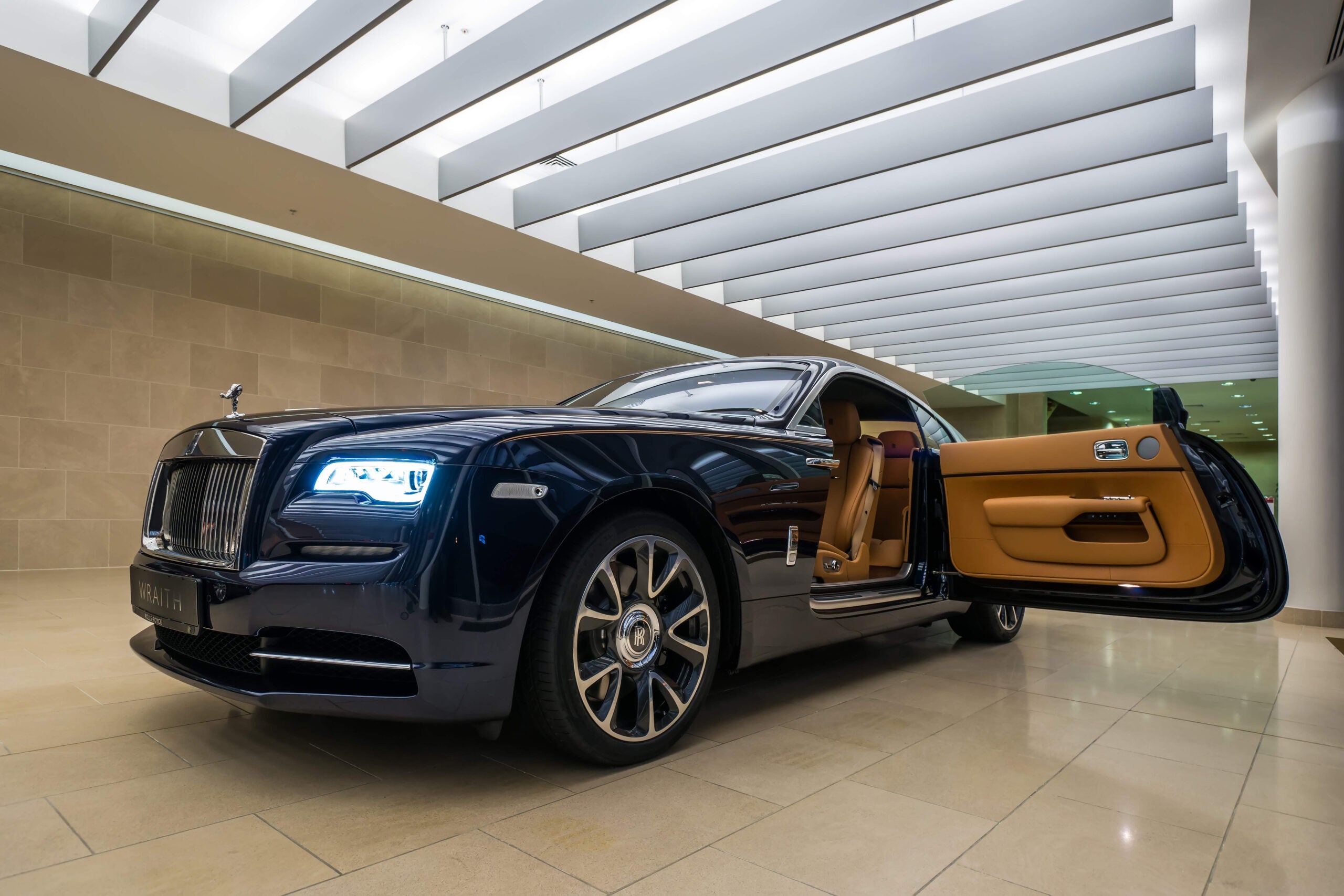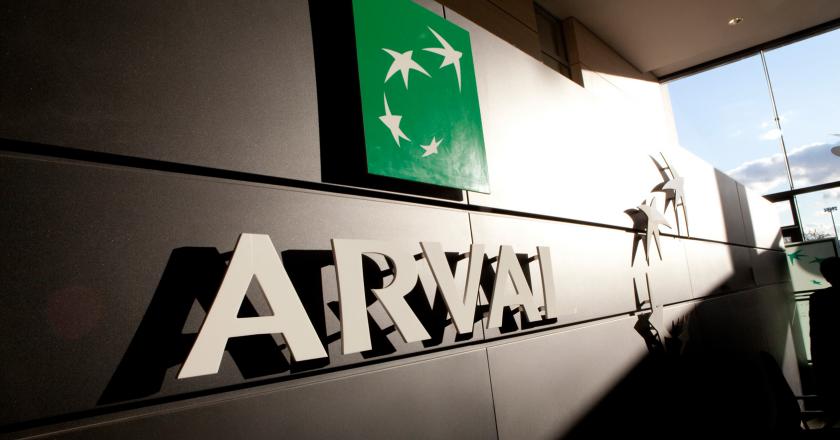
Prestige car finance has remained mostly immune from the turbulence in other sectors of the market, but it is still seeing a shift from speculative investors back to the collectors’ market. Chris Farnell speaks to industry figures to find out more.
When it comes to the prestige car finance sector, both finance companies and customers have different needs and concerns. “What we see in the prestige end of the market is that the typical customer is very concerned when it comes to the vehicle – they’re motivated very much out of maximising the value of their money – so that’s why we have healthy penetration with Rolls Royce even with customers who are financially very solid, sound and well off,” explains Spencer Halil, director of Alphera Finance Services.
“At the prestige end there’s an expectation of excellent service, although we wouldn’t expect to deliver anything less at the volume end of the market either. That’s a cultural statement for Alphera: there is a certain expectation of service and expertise at the prestige end that not every lender can deliver.”
It is a sector that necessitates more complex financial products than other sectors of the car finance market, including annual arrangements for people with bonus-related pay structures.
“For them it’s not about what they can afford, but what they are willing to commit to or put aside for that purpose,” Halil says. These different concerns mean that in many ways the market is untouched by concerns faced by other parts of the car finance market.
“There hasn’t been the uncertainty seen in other sectors,” Halil notes. “There’s often the sense that the sector is less prone to the ebbs and flows of the economy because those customers are financially secure and their income is often not derived from a UK source. We’ve seen no dips due to Brexit concerns, for instance. It’s not a sector affected by diesel or even alternative fuels. So, generally it’s been a good 12 months and we’ve enjoyed solid performance.”
In many ways, this is making the market an oasis of a calm when other sectors face the uncertainty caused by issues such as Brexit or the shift from diesel. “The challenges are the same, and in the prestige end there’s a little bit of protection from economic challenges other areas of the business are concerned about,” Halil says.
Darren Selig, co-founder and executive chair at JBR Capital, continues: “The future is always unknown, and I think there are some exciting developments to come in the sector assuming the economic landscape doesn’t take a turn for the worse.
“As Brexit approaches I am not expecting any material impact, as most of our customers just seem to have got on with life regardless.” While the market is unaffected by wider trends in the sector, that does not mean it has been unchanging, as Selig explains.
“Regulation and compliance continue to dominate the consumer lending markets, and the prestige car finance market is by no means immune to the new era ushered in a few years back, following the transition of the industry regulatory framework to fall under the auspices of the FCA,” Selig tells Motor Finance.
“One of the major developments we have seen over the course of the last year is mainstream consumer-focused autoscoring lenders having to introduce more stringent affordability checks into their processes. This has made it a lot harder for some previously accepted customers to obtain finance via this route, with the knock-on effect felt through lower car sales in some prestige dealers.”
COOLING CLASSICS
One significant area of change has been in the classic car sector, which has been subject to much-lauded growth as a worldwide investment class. Last year Selig observed that this growth had plateaued, and given that the HAGI top index shows a 1% decrease for the last 12 months, which contrasts with a 288% growth over the last 10 years and 91% over the last five years, this would seem to be the case.
But that does not mean anyone should be naysaying about the classic car market. “What we have, and continue to witness, is the exit stage-right of the speculative investor who cannot make his quick buck anymore,” Selig says.
“This has led to further polarisation in the classics market, whereby real collectors are still willing and able to pay top money for bestin-class cars which come in low production numbers with matching numbers, low miles, full documented provenance and history, and mint condition.”
Selig also observes that this trend is mirrored in modern, limited-production-run premium specials, which have seen what he calls a “correction” in prices and values. For instance, a McLaren 675LT Spider that cost the best part of £400,000 can now be bought for around £270,000, and a Porsche GT2RS that was previously selling at a premium of around £550,000 has fallen to a more realistic level of around £425,000.
“That’s not to say there aren’t buyers – there are, but the buyers are now long-term enthusiasts looking to buy into the sector at more realistic valuations and seek a deal which represents value for money,” Selig says.
These collectors are a source of opportunity for the sector, and with asset values growing considerably over the last decade there is a growing asset-rich but cash-poor market who want to extract the value tied up in those assets without giving up their prized vehicles.
Equity release is becoming a more prominent finance product in the market, and there are a growing number of large ticket transactions that require £10m-50m in funding. “There are very few lenders in the market that have the ability to handle and transact a loan of that size. Although I would hardly call this mainstream lending, it is an opportunity for a specialist lender like JBR Capital which has the ability to handle large and complex transactions of this nature,” Selig notes.
CUSTOMER RELATIONSHIPS
One area where the prestige car finance market is running in a direction counter to the rest of the industry is in customer relations. While other parts of the car finance industry are beginning to lean more on online and automated customer relations solutions, at the prestige end of the market the human touch has even more of a premium attached.
“I think prestige is interesting, because you’re dealing with a relatively small set of customers for high-allure transactions,” Halil explains. “The digitisation of the sales process seen in other market places is less evident in the prestige super luxury sector. I do think the future will see more digital enablement, but that will be much more along the lines of concierge type services – the premium loungetype experience where you will use digital communications to support the customer for all their driving and motoring needs.”
However, in many ways the challenges are not hugely different from the premium volume end, as Halil points out, although competition is fierce. “It’s a very competitive market out there, with lots of really good cars, so from a car company perspective they need to differentiate themselves, and from a finance perspective we need to do the same. We do well because we focus on the customer relationship, which breeds loyalty, so we have a lot of repeat business, and we have concierges who manage relationships, particularly with high-value customers. We take the financial discussion out of the dealer environment.”
Selig agrees that competition in the sector has been heating up recently. “There have been a number of new entrants into the highend vehicle finance market, both from the consumer motor finance and commercial asset finance institutions,” he says.
“The market has grown substantially over the last decade, and there is more than enough room to accommodate healthy competition! However, it does mean that we constantly need to innovate on products, service and technology in order to stay ahead of the competition.”
Other methods that Alphera and JBR are using to set themselves apart in this sector include special credit line products for high net worth individuals. Selig says: “Customers like to go to dealers and auctions and buy with confidence knowing that their funding solution is already approved and in place ready to go.
“Serial and multiple purchasers of prestige cars often require a significant credit line to be put in place in order to satisfy their requirements. We are always looking to enhance our product offering and loyalty to our customers and provide a service they really want, rather than what we think they need. JBR provides credit lines up to £5m for customers, subject to credit approval.”
Tools like these are essential for building up long-term relationships and generating repeat custom, especially among a customer base that is prone to change. As Selig points out: “Customers in the prestige car market are generally very fickle, have a high propensity to change their vehicle often. On average, finance agreements run some 22 months out of an average 48-month agreement, and few finance agreements ever reach full term. Emotive cars attract emotive customers, and they often fall out of love quickly with their prized possession, so retention of customers is key.”
KEEPING PACE
But while the market is becoming more competitive, it is also growing, with a record number of people buying high-end vehicles and using finance to facilitate the purchase, instead paying outright with cash.
As a result, more and more customers view their car purchase as an affordable monthly cashflow expenditure as opposed to an outright capital purchase. “There are forever-increasing levels of interest in the sector, given the continued growth in the luxury sector,” Selig says. “New product lines from most of the luxury manufacturers – such as moves in the SUV market by Rolls Royce with the Cullinan, and Lamborghini with the Urus – are keeping customers interested. Limited-productionrun cars such as the Ferrari 488 Pista and McLaren 600LT will continue to have more buyers than allocation, despite the cooling in the secondary market.”
Among the growing trends in new models is the slow but seemingly inevitable move towards hybrid and electric vehicles (EV), which manufacturers have been increasingly embracing. It is early days for the development of these vehicles, but they are increasingly fashionable and lenders will need to adapt their outlook on traditional petrol engine cars and move with the times.
As Selig points out: “Residual value setting will have some people scratching their heads, given that some EVs could become obsolete very quickly.” One example where the rapid pace of technological development will have an impact is in the area of battery technology. As it gathers pace, early adopters could end up with cars and agreements that they would need to pay a hefty bill to get out of.
In a finance market where affordable monthly payments dictate buying decisions, lenders are going to have to make some tough calls when it comes to estimating residual values. The path ahead for the prestige car finance sector is one replete with challenges and opportunities.
It is by no means an area to make a quick buck – as the cooling numbers of speculative investors shows – but there is still a core of passionate customers who, typically, come with extremely solid financial backing.
As long as companies are willing and able to cater to the needs of those customers, prestige car finance retains a bright future. “It’s an incredibly vibrant part of our industry.
From a finance company point of view, if you have the confidence and capacity to set good residual values and construct really broad products then it can be a really good part of your business, and we’re happy to be a part of it,” Halil says.
Selig concludes: “JBR Capital’s model hasn’t really deviated since starting in January 2015, and our place at the finance table is as relevant today as it was in 2015. “While others have amended their credit policies and appetite in order to try and do what we do, we continue to move forward and strive to add value and relevance to our customer proposition. We are excited as to what the future holds.”







